Urban Housing Solutions:
It solves urban housing shortages by providing rapid and environmentally friendly alternatives for residential development in highly populated cities.
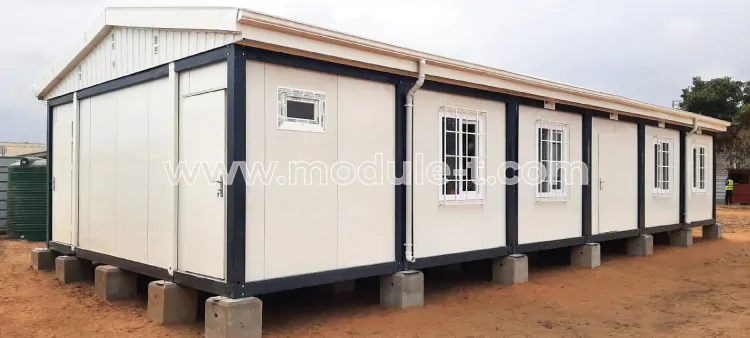
Modular and prefabricated dormitory buildings transform how industries address their housing needs, offering a modern, efficient alternative to traditional construction. These structures are designed to be rapidly assembled, making them ideal solutions for sectors that require flexible, scalable, and cost-effective accommodation options, such as construction, mining, and oil and gas.

A modular locker room is a highly durable steel-framed sandwich panel construction built remotely and shipped to the site in sections for assembly.
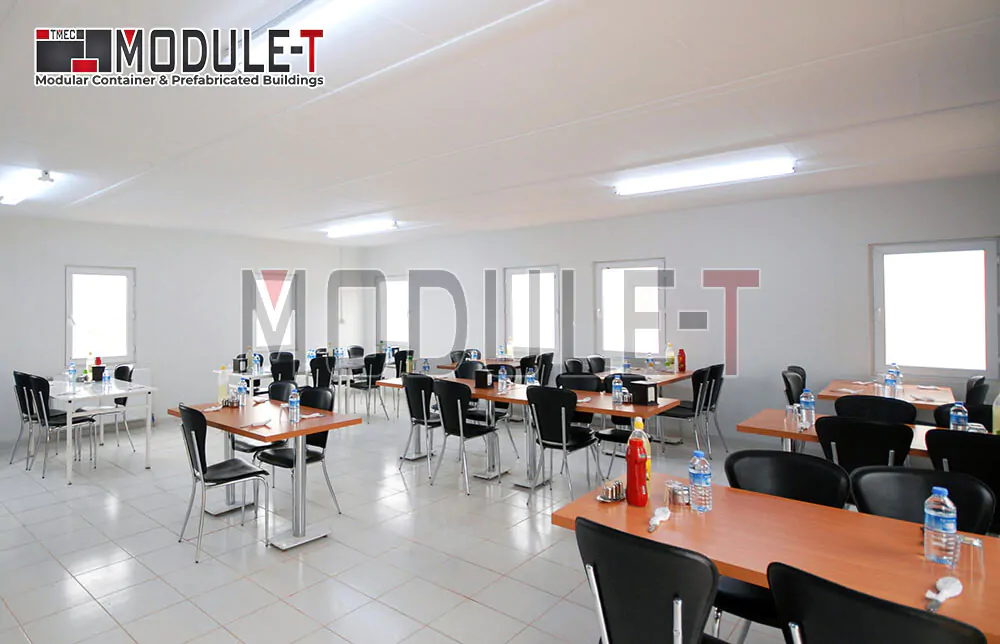
The food service industry requires modular and prefabricated restaurant buildings to incorporate new approaches to customer interactions and identify areas of improvement regarding workflow. Enter the modular and prefabricated restaurant buildings, a novel idea revolutionizing conventional restaurant space. These versatile and convenient structure types provide innovative options, from designing your own to assembly procedures, thereby starting an innovation in the dining scene.
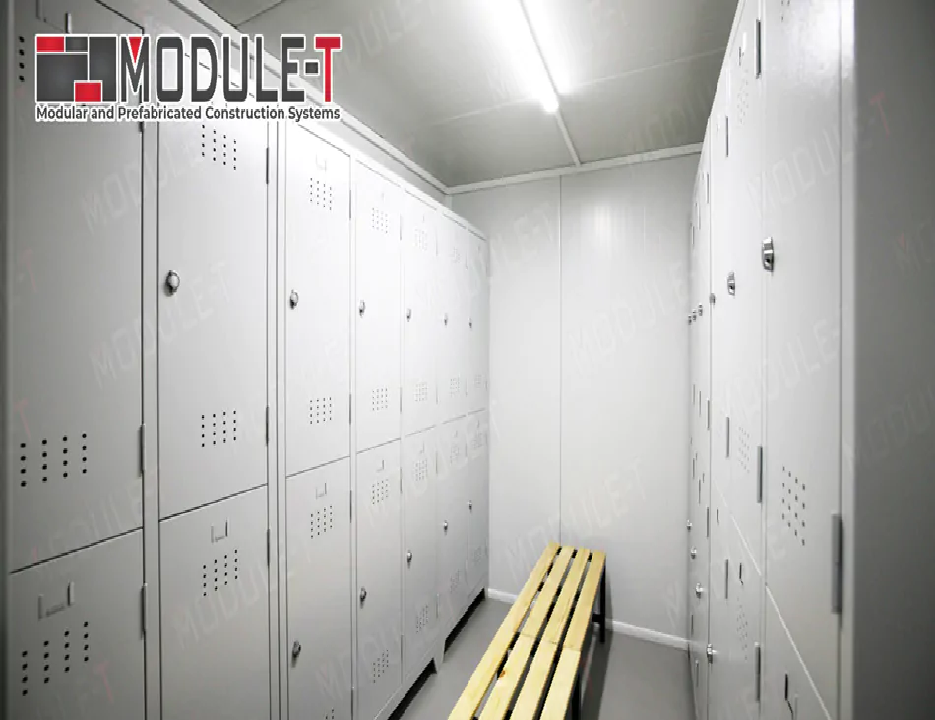
The modular and prefabricated portable drying room is a game-changer in drying technology. With compact, mobile designs, portable drying rooms enhance efficiency by streamlining the drying process in prefabricated labor rooms. These rooms utilize dehumidification solutions to actively remove moisture from the air, accelerating the drying of wet clothing, which is essential in weather-sensitive environments. Additionally, they double as changing rooms, providing workers a convenient space to change into dry gear, further improving comfort and hygiene on-site.

Modular and prefabricated labor camps are vital for industries like mining, construction, heavy engineering, and oil and gas that operate in remote or challenging locations. These modular and prefabricated labor camps serve as temporary living and working spaces, providing essential facilities for workers to stay productive and comfortable in demanding conditions. Module-T, a leading Turkey-based manufacturer, has extensive experience in creating robust prefab labor camps that are durable, versatile, and specifically designed to meet the needs of industrial sites worldwide.
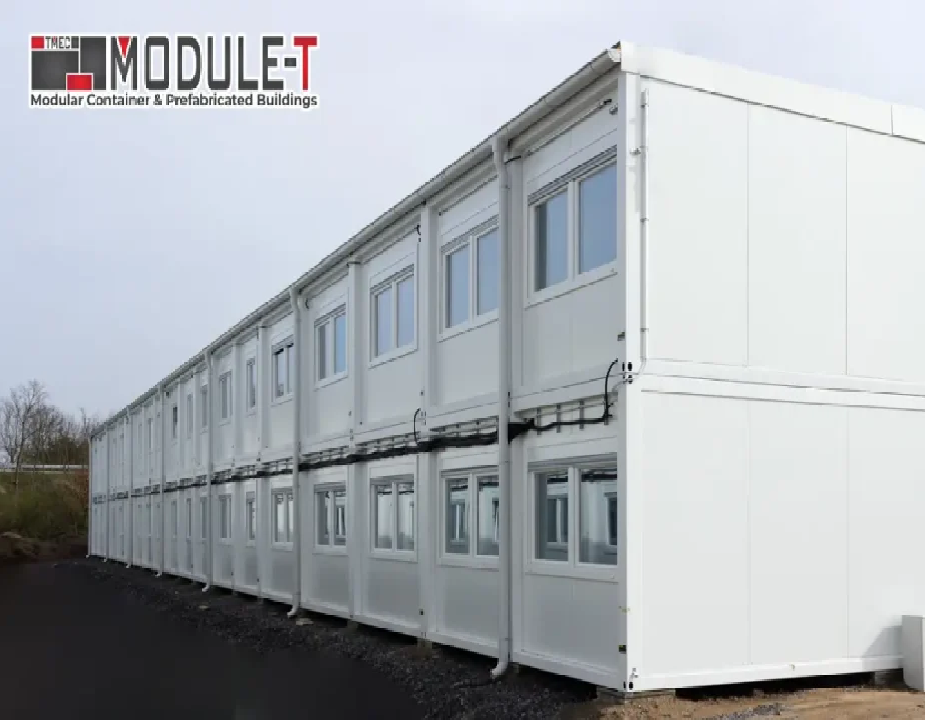
Educational establishments always seek advanced tools to create optimal learning environments and minimize the construction process’s costs. Modular and prefabricated school buildings have revolutionized educational architecture. These structures redefine the school system and provide notable benefits, from flexible designs to streamlined construction processes.
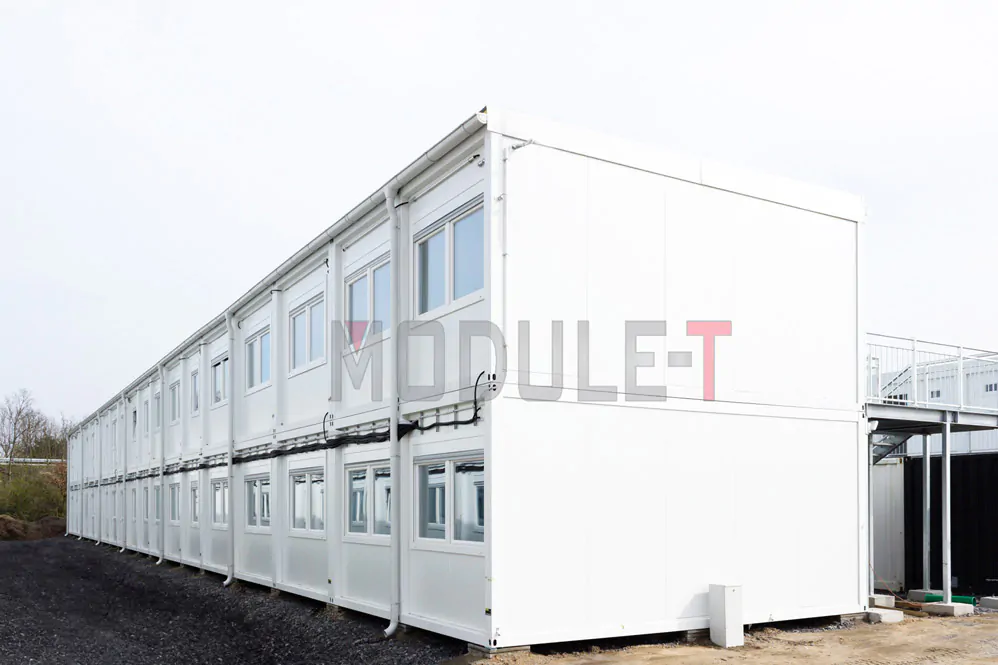
The modular construction industry has evolved rapidly, with many public and commercial facilities now built using prefabricated structures. One of the most notable trends is modular and prefabricated hotels, which offer superior quality, cost savings, faster installation, and enhanced sustainability compared to traditional brick-and-mortar hotels.
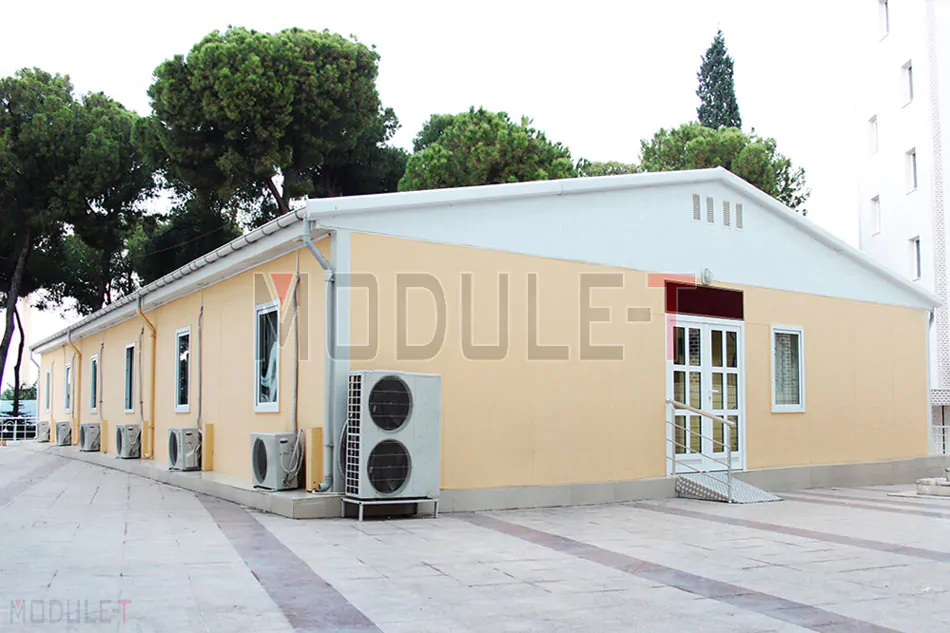
Modular and prefabricated hospitals and medical centers offer highly flexible designs and are built with premium materials that meet strict international standards. Compared to traditional brick-and-mortar facilities, these structures are faster to manufacture and assemble while also ensuring durability, hygiene, and long-term performance in diverse environments.
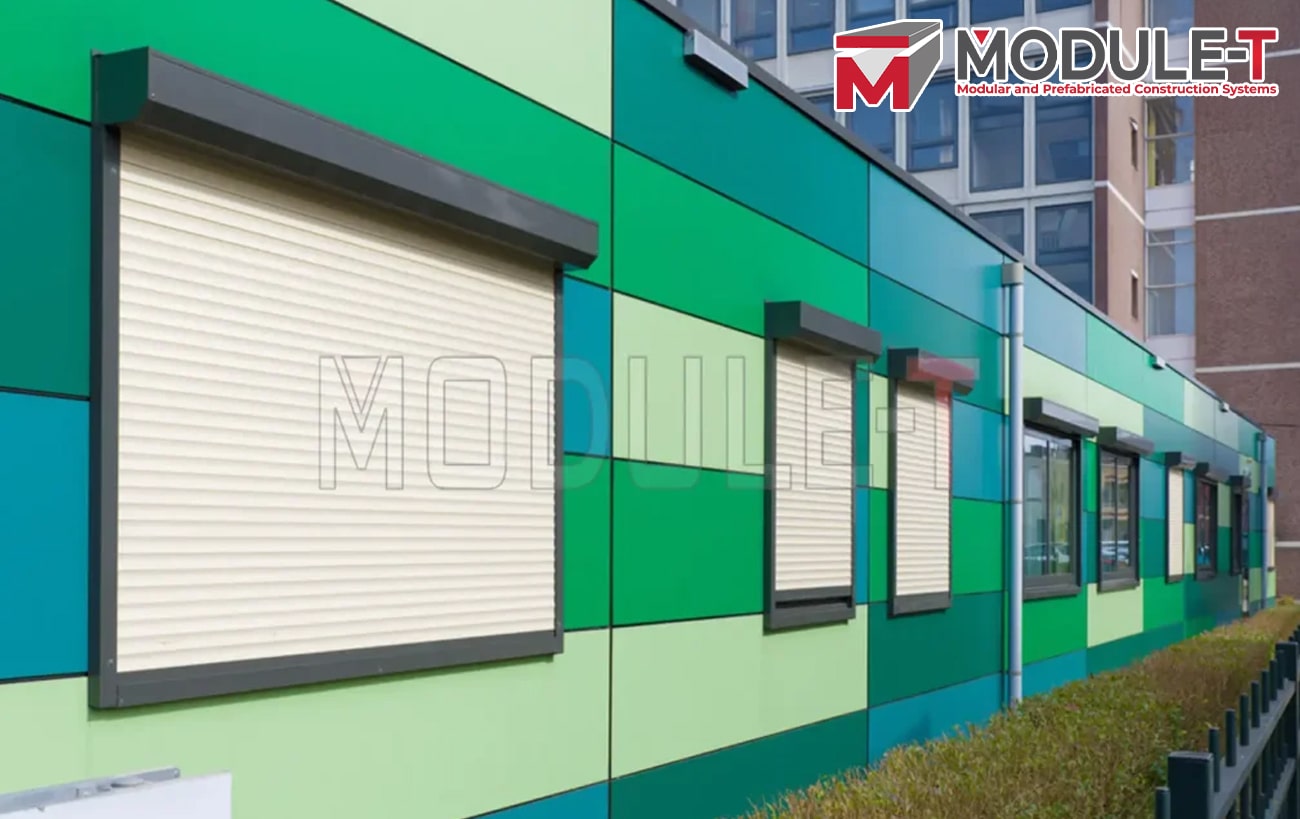
Modular commercial buildings are constantly evolving, and as a leading modular construction company, we make a point of remaining at the forefront of our industry. Our range of modular commercial buildings for sale provides a high-quality and fast-to-produce workspace that now matches and can even outperform many conventional builds in strength and durability.
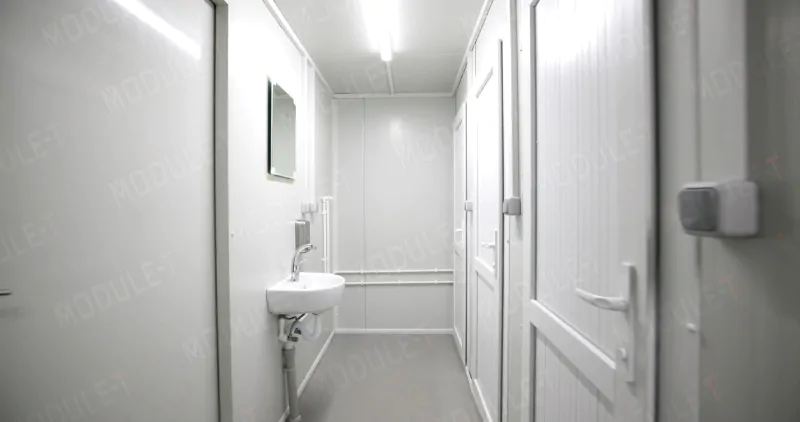
Modular bathroom buildings offer a practical, time-saving solution for projects requiring high-quality, hygienic facilities. These structures are manufactured off-site and quickly assembled on-site, ensuring faster project completion with minimal disruption. Whether integrated within prefab healthcare centers, accommodation units, or a modular office with a bathroom, these modular bathroom buildings deliver the same durability and functionality as traditional builds.
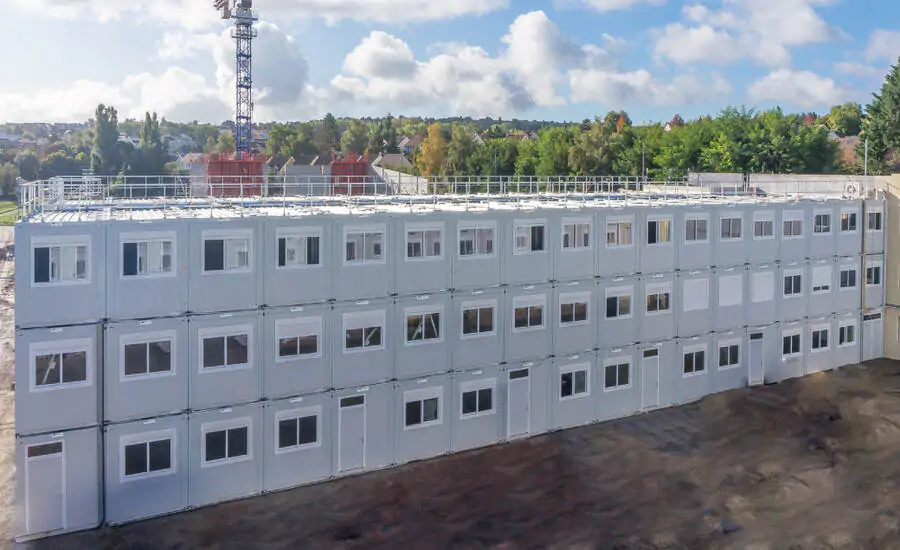
Modular site facilities buildings are designed to meet the highest industry standards, offering versatile and efficient solutions that surpass traditional brick-and-mortar structures. These buildings provide significant advantages, including cost savings, rapid deployment, and exceptional adaptability. Unlike conventional construction, modular site facilities buildings can be customized to specific layout requirements and easily expanded or reconfigured as your needs evolve. Their portability is a standout feature, allowing them to be quickly assembled, disassembled, and relocated to different sites with minimal disruption, which is crucial for industries like construction, mining, oil, gas, and emergency response. Furthermore, their eco-friendly design reduces waste and supports sustainability efforts, making them a more responsible choice for environmentally sensitive prefabricated labor camps.
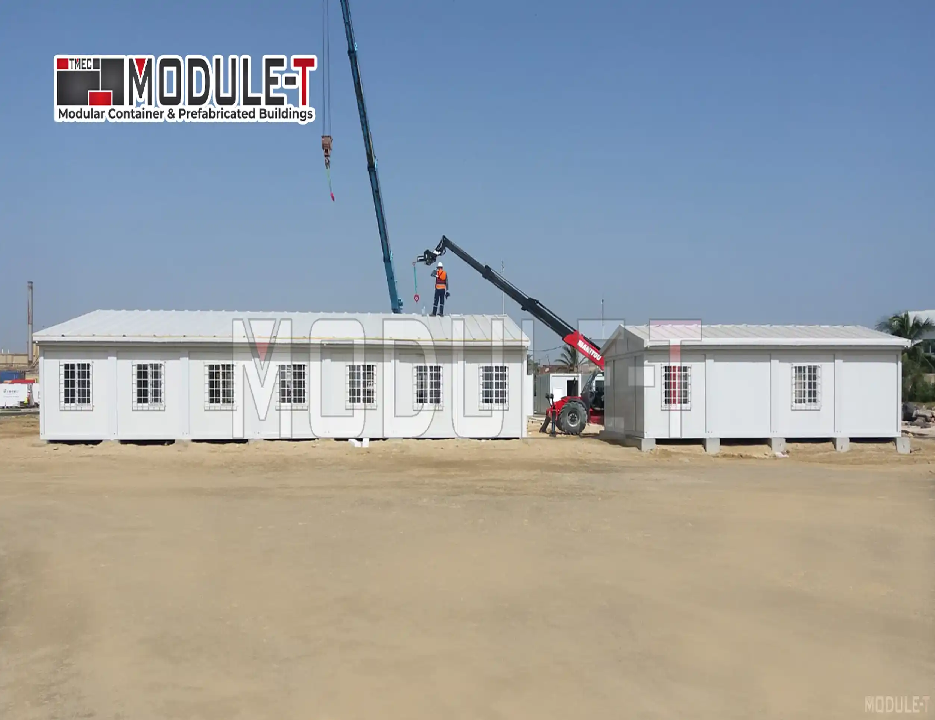
Modern modular accommodation buildings have revolutionized the construction industry by introducing efficient, cost-effective solutions. Built using off-site prefabrication techniques, these structures are transported and assembled on-site, significantly reducing construction times. They offer various advantages, including cost savings, sustainability, and minimized on-site disruptions.
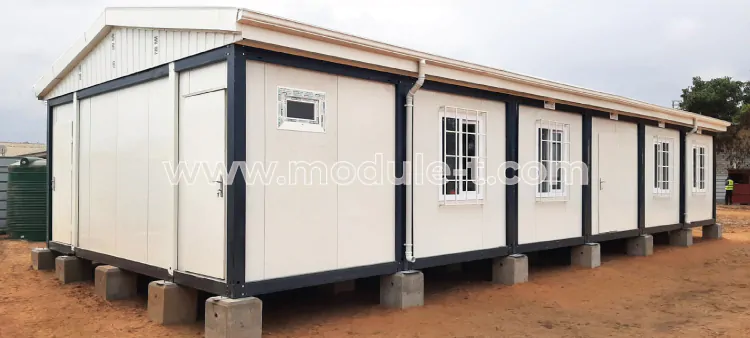
Conventional building processes can be costly and take months or even years. Bad weather delays, unreliable contractors, and damage to goods can eat into your budget and delivery timeframes. In contrast, our modular office buildings offer a time and cost-effective alternative.
The construction industry has evolved significantly with the introduction of modular prefabricated buildings. These innovative structures, like modular containers defined by flexibility and efficiency, transform traditional construction by offering faster build times, cost savings, and sustainability. Utilizing advanced off-site manufacturing techniques reduces on-site labor needs and minimizes disruptions, making them ideal for urban and remote projects.
Modular prefabricated buildings are manufactured off-site in a factory setting and assembled on-site. This method allows for better quality control, reduced waste, and quicker installation than conventional building techniques. These modular prefab buildings often feature durable materials like steel or aluminum frameworks, high-grade insulation, and customizable layouts to suit various needs, from industrial facilities to educational institutions.
The design flexibility of modular prefabricated buildings allows for their use in a wide range of environments. Modules can be stacked to create multi-story structures or connected side-by-side to form larger spaces. This adaptability makes them ideal for creating custom solutions, such as modular office buildings, dormitories, healthcare facilities, or temporary emergency shelters.
One key advantage of modular building construction is the efficiency in transportation and assembly. Prefab modules are compactly packaged for shipping, reducing costs significantly. Once on-site, the assembly is rapid and straightforward, often requiring minimal labor, further lowering project expenses. This makes prefab modular buildings especially useful for remote or challenging locations.
The structural components of modular prefabricated buildings include rigid frames and high-quality insulating materials that enhance energy efficiency and climate control. Roofing and flooring are typically made from durable materials like metal or engineered wood, ensuring aesthetic appeal and structural integrity. Utility systems like electrical and plumbing are pre-installed, streamlining the on-site assembly process.
Exterior finishes, such as cladding and siding, provide additional protection against environmental elements, while interior design options offer customization for various applications. This approach allows prefab modular structures to be tailored to specific requirements, ensuring functionality and comfort.
Efficiency is the key to designing modular and prefabricated buildings that can be easily transported anywhere. Modules are commonly transported as sections, reducing construction time spent on site. The assembly process is efficient and organized, using factory production precision. The modules are integrated on-site, creating a unified structure that complies with strict quality specifications.
The simplified process reduces project timeframes, saves labor costs, and removes the environmental burden. Modular prefabricated buildings are easy to assemble, so they establish projects that need urgent deployment, like emergency houses or remote site facilities. This deviation from traditional construction techniques provides unique flexibility and efficiency.
It solves urban housing shortages by providing rapid and environmentally friendly alternatives for residential development in highly populated cities.
They increase productivity on industrial sites and are suitable for factory prefab offices, worker camp solutions, and plant facilities.
They can easily be implemented in academic settings to provide temporary classrooms or extra school buildings during expansions.
Medical field hospitals or temporary clinics are immediately constructed in emergencies, making health infrastructure development possible.
Modular and prefab buildings can be utilized in military applications, providing convenient and flexible space for living provisions on various sites.
Mining Sites provide simple and flexible alternatives to housing requirements and operating stations in isolated mining areas.
When a disaster strikes, they are their source of immediate and safe accommodations to house victims.
They could represent an economical, sustainable, and flexible approach towards eco-friendly vacation houses in scenic locations.
Modular prefabricated buildings reduce construction time by prefabricating some components off-site and between units, allowing for easier installation.
It is a cost-efficient building style that saves money by reducing labor expenses and reusing materials.
Modular structures offer high precision in design, allowing for customizable geometry and functionality to meet specific needs, such as restaurant buildings. This flexibility ensures that modular restaurant spaces can be tailored for optimal kitchen layouts, dining areas, and customer flow, all while minimizing production waste and maximizing efficiency.
Using effective insulation materials indicates that they are energy efficient, cost-friendly, and environment-friendly.
Waste minimization and eco-friendly material selection principles are used in it for sustainable constructability.
Factory-controlled mass production guarantees homogeny of quality in all modules and low error and defect rates typical for traditional on-site buildings.
Unlike conventional construction, they are built within a controlled environment, which minimizes on-site disturbances and allows communities to lead quiet lives throughout construction.
Modular construction has become popular in recent years as it is efficient, sustainable, and cost-effective. Nevertheless, the factors that determine the price form a reality for decision-making. Several factors affect the pricing of modular prefabricated buildings for sale:
1.Design Complexity: Opting for certain complex designs with distinctive features or alternative layouts can raise manufacturing and assembling costs.
2.Material Selection: The cost of the equipment is greatly influenced by the choice of materials. Premium-quality materials may cost more upfront, but the savings from less maintenance and repairs are maintained indefinitely.
3.Size and Scale: Larger buildings, such as accommodation buildings, tend to cost more due to increased materials, labor, and transportation requirements.
4.Customization and Add-Ons: Built-in custom features like specialty finishes, fixtures, and technologies can increase the cost of buildings.
For a customized evaluation of modular building costs specific to your project, please contact Module T.
The principle of modular prefabricated buildings is the assembly of structures using prefab containers. These containers comprise a factory-prefabricated light steel frame and sandwich panel walls, making installation quick. Assembling a unit is twice as fast as its concrete equivalent. Moreover, the structure is installed on a lightweight foundation, reducing costs, especially in terms of the budget for concrete and labor. Once a project ends, the structure can be easily dismantled and reassembled on a new site.
Another advantage is that it is multi-functional. It can be used as a temporary building on a construction site. It can also be used as an administrative building, a refectory, an office, a school, a prefab commercial building, etc. Regarding insulation, the prefabricated modular building offers the same thermal and sound performance as traditional concrete construction. Our sandwich panels are insulated with stone wool or polyurethane up to 200 mm thick. Our system meets the insulation and safety standards of each country. The floors, ceilings, and roof also benefit from an excellent level of insulation.
Construction solutions offer great advantages for optimizing your budget. You can realize impressive savings compared to conventional construction, up to 40% to 50%. Delivery-wise, we ship special dismantled packs by sea or land, reducing transport costs and adding to overall savings.
Choosing a partner who can meet your specific project needs is essential when considering prefab building manufacturers or modular prefabricated buildings near you in the USA or any other country. Module-T is a world-leading supplier of fast, high-quality building solutions for various construction projects. Modular prefabricated buildings in Turkey provide a practical alternative to a traditional concrete structure and are more economical, environmentally friendly, quicker to install, and just as durable. Besides the construction materials’ premium quality, Module T also excels in other aspects. These include a fast, reliable delivery and installation service and the ease with which they can be customized to client’s specific needs, depending on their projects’ nature and geographical location. Moreover, the costs of transporting them by land and sea are very reasonable, thanks largely to the special compact, economical packaging.
Module-T is happy to offer you custom modular buildings by altering the design and configuration of the modular units and the internal and external cladding. As a bonus, a qualified in-house assembly team can be sent out from the factory in Turkey with your tailored building solution to install the units quickly and aptly upon arrival on site. This exclusive service gives you more reason to choose Module-T, a prefabricated building company, for your perfect modular construction project.
Prefab materials used in modular buildings typically include steel or aluminum frameworks, engineered wood, metal panels, and high-grade insulation materials like polyurethane or mineral wool. These components ensure durability, energy efficiency, and structural stability in various environmental conditions.
Modular prefabricated buildings can be easily transported, providing flexibility and adaptability.
These structures do not come with appliances, and the clients can choose those that meet their tastes and needs.
Of course, modular prefabricated buildings can be layered to make multi-story structures, offering flexible and adjustable space solutions.
The prerequisites of setting up modular prefabricated buildings are site preparation, foundation, and utility connectivity.
Modular prefabricated constructions comply with high safety standards, thus ensuring secure premises for living or working.
Modular buildings are a type of prefabricated structure made up of pre-built sections or modules that are assembled on-site. While all modular buildings are prefabricated, not all are modular; prefabricated buildings can also include other forms like panelized or kit-based constructions, where components are built off-site and assembled differently on location.
The components of modular prefabricated buildings typically include the structural frame (usually made of steel or wood), wall and roof panels, flooring, insulation, and cladding. It also includes pre-installed systems like electrical wiring, plumbing, HVAC, and interior finishes, all manufactured off-site and assembled into modules that form the complete structure when joined on-site.
Request a Quote
To receive a quote quickly, please fill in the customer request form. Our sales representatives will contact you as soon as possible.